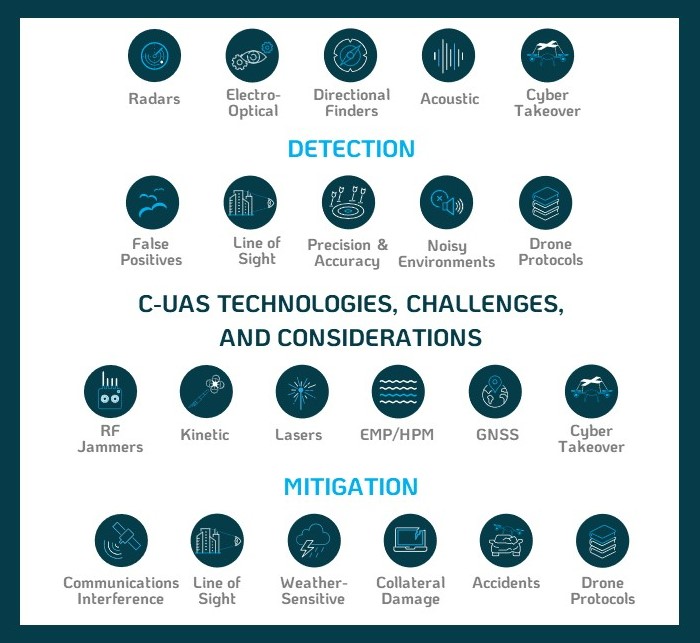

The constantly broadening range of Counter-Drone (C-UAS) Detection and Mitigation Technologies available today makes an efficient assessment incredibly challenging. Each technology is different in terms of relevance for various environments, scenarios, and use cases. Both well-established legacy methods, as well as newer innovations and techniques, warrant deep investigation to provide thorough decision support for C-UAS system acquisition processes.

In addition, recent technologies have emerged with vastly different approaches and capabilities that should be considered in the mix.
Finally, each technology field has within it specialized segments and sub-segments. This level of detail needs to be thoroughly addressed rather than making oversimplifications for broad technology segments.
In this context, and bringing a new and fresh perspective, these two white papers on counter-drone (C-UAS) detection and mitigation consider today’s sensitive environments for C-UAS deployments, the latest technologies, and present detailed looks at segments within the various counter-drone technologies.
These white papers lay out detailed overviews of the various counter-drone detection and mitigation options, including descriptions, primary uses, strengths, challenges, and operational considerations.
From a best practice perspective, the core issue is always which counter-drone detection and/or mitigation technology will be the most suitable for the particular use case, scenario, sector, and environment. Responsible decision makers will of course seek to assess the advantages and disadvantages of each detection and mitigation technology, to support thorough deliberations and research regarding which technology option will satisfy very specialized needs.
These papers also discuss operational considerations relating to how security agencies that are allowed to utilize C-UAS technologies should be cognizant of how regulatory and environmental considerations can affect these technologies in the field.
Ultimately, adoption of a multi-layered detection and mitigation technology can support the success of countermeasures for the varied nature of the rogue drone threat, with a holistic approach for safer airspace.
Read and compare with this new take on C-UAS technologies and concepts!